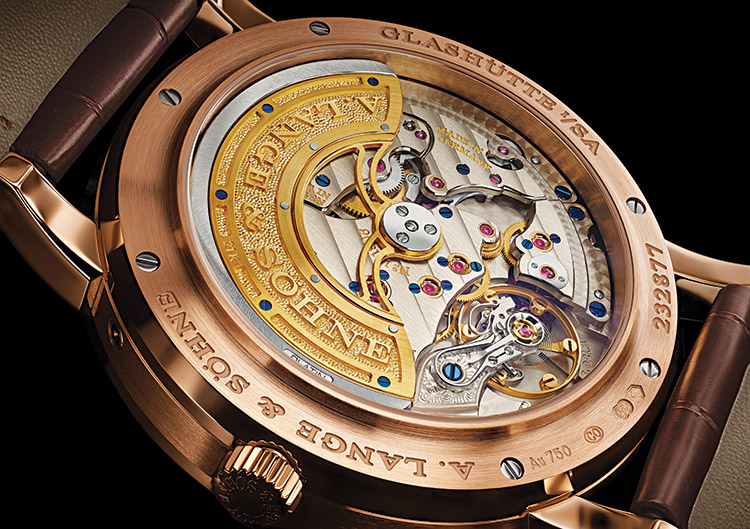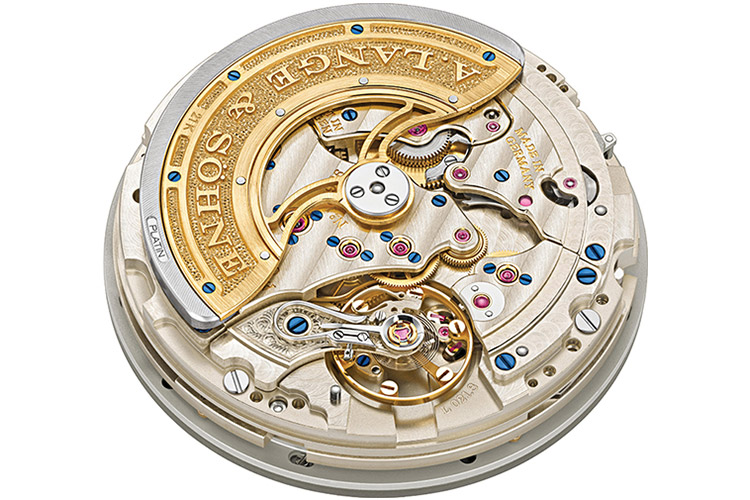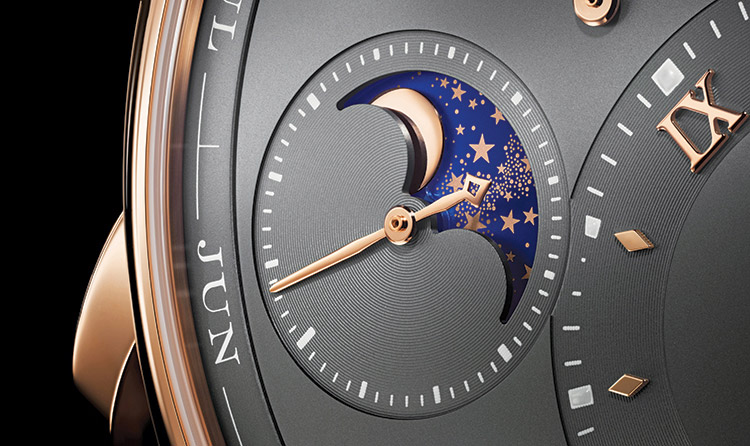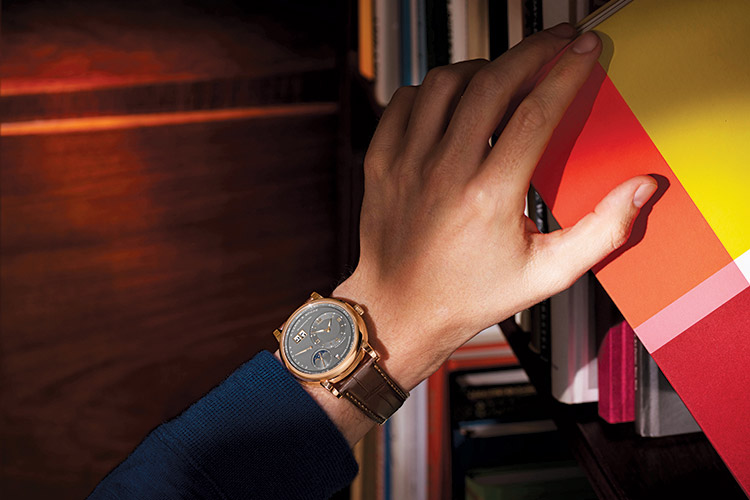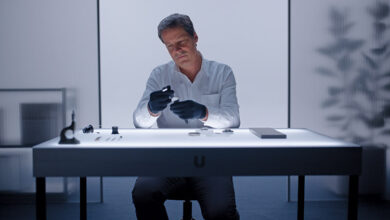
The 2021 edition of Watches and Wonders saw A. Lange & Söhne unveil the Lange 1 Perpetual Calendar and the second iteration of its historic Triple Split in addition to a moonphase. We caught up with Wilhelm Schmid, CEO of the brand, to find out how the marque weathered the pandemic and for some insights into its new releases
With Germany suffering a series of lockdowns, did it affect the production line of Lange watches?
We do produce a lot ourselves, but we still have suppliers, mainly from Italy and Switzerland, and these two countries were the ones heavily impacted in the beginning. In the meantime, we all learnt to live with the restrictions; our first aim is to protect our people. A watchmaker, a finisher, or the people working in the machine department had to come to work; they could not work from home. We made sure that they worked in the safest environment we could possibly generate. That comes with loss of efficiency, loss of communication, which again equals loss of efficiency. We also had stringent rules, such as wearing masks if they moved from their regular station, no mingling or any social interaction. It does have its implications, but we are managing it a lot better than we did 12 months ago.
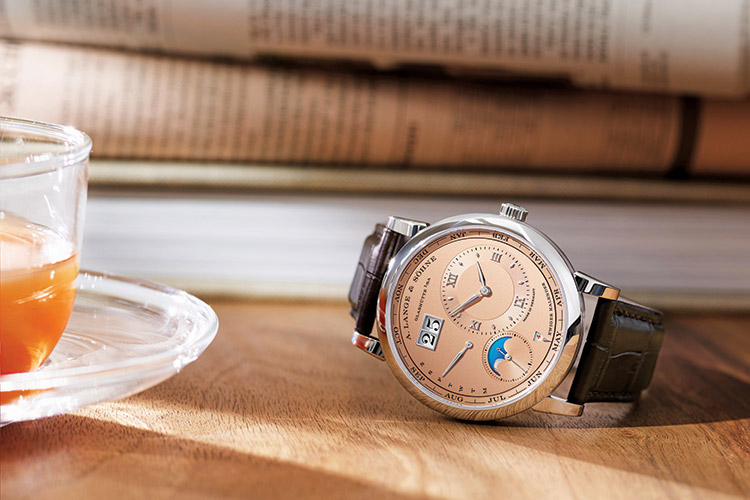
How were you able to incorporate all the functions of a perpetual calendar and still maintain the typical Lange look with the Lange 1 Perpetual Calendar?
You have to rethink the idea of a perpetual calendar because of the decentralisation of all indications. If we go through all the iterations we have of the Lange 1 family, there is a golden thread that runs through all of them. At first look, it has to look like a Lange 1. If that mission is not accomplished, we will not launch that watch; it is as simple as that. For a perpetual calendar, you have to rethink it all and that is why you start from the design and not the movement, which is probably what a lot of other watchmakers did. We start from how it should look and then the people from construction have to come up with the idea that will help them execute the design. We reverse the process – from design to movement and not from movement to design.
What was the time frame of the Lange 1 Perpetual Calendar – from conception to launch?
We started in 2017, but with the Lange1 Tourbillon Perpetual Calendar that we launched in 2013, we did know about the peripheral monthly ring and how it works. A typical Lange concept is that we integrate more and more what we learnt over time. As legibility and hierarchy of information is important to us, we minimised it even further by including the day and night in the moonphase. If you go back to our 2013 launch, you can see the day and night indication on the dial; in that watch, we don’t need it because it is integrated. We also didn’t use the original movement because the tourbillon was so integrated that it was actually more difficult to reduce it than to start with the Daymatic movement, build the perpetual calendar and the day and night indication on it. We bring the best of the other watches we have launched and come out with something totally new.

Do you think Lange’s insistence on emphasising its finishings and forging its own path rather than following trends is the reason for Lange’s success?
I do think it takes a long, long time to build up a brand, and very few, stupid decisions to destroy it. Companies are a lot more vulnerable in times of crises, to taking shortcuts, doing more opportunistic things. Lange’s ecosystem, which is always more than one person, and the freedom from Richemont to live the way we live protects us from falling into that trap. It is one of the big achievements of Mr Blümlein and Mr Lange to establish that value system within the company that stops us from taking shortcuts.
A lot of people don’t like what we do while others do; we produce only 5,500 watches a year and that can’t be for everybody as we are too small.
Despite numerous crises, Lange has always shown a steady single-digit increase year on year; how is that possible?
We don’t think of quarters, years, or reporting periods; our maison is driven by the idea of fine watchmaking. And it all starts with watches; we are watchmakers at heart. That is why we will always be small; we can’t scale up what we do. That is why we will never peak quickly but also why we will not fall apart quickly. We are rather resilient and slow.
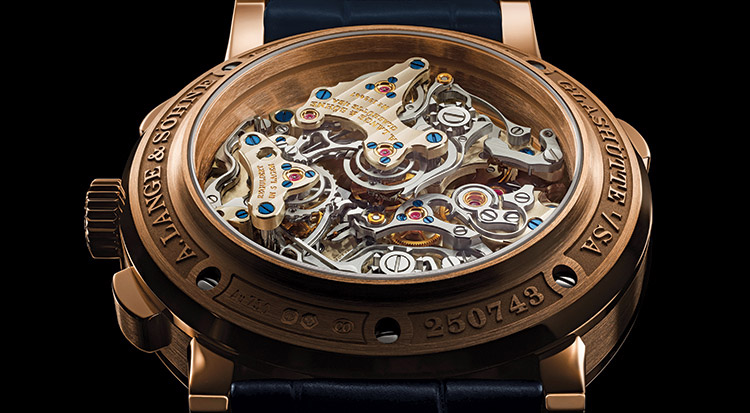
In 2018, Lange released the world’s first Triple Split complication in the world; what was the feedback from watch collectors and how was the morale and feeling of the Lange team?
You usually upgrade your game when the competition is following, but in this case, we had to compete with ourselves. We had to bring out a Triple split after the Double Split; the challenges were to do that within the same dimensions, with an extended power reserve, and even increased wearability. When we launched it, people were expecting a lot but not that and we love surprising our collectors and journalists. The reception was really great and that is why we are bringing the second iteration.
The demand, first of all, was more than the 100 that we had produced of the first one. But it took us three years to produce this 100. We cannot move a watchmaker working on a Triple Split to somewhere else, because you will lose all the tricks, the efficiencies and the mindset that you need to have to assemble a watch as complicated as a Triple Split.
If you ask a good watchmaker, whether he would rather work on a triple split, a tourbillon or a perpetual calendar, they would usually opt for the tourbillon or a perpetual because a triple split is a monster to work on. It is a hugely complicated watch and that is why watchmakers will work through, so that it will probably take us the next three years to finish the next 100. That is why the number will never be more than a 100 as that would then go into five-six years to deliver and that doesn’t make any sense.
A chronograph in itself is an under-rated complication in my opinion, because there are a number of levers that you have work with, and then you go on to the next level, the chronograph rattrapante which has so many parts. It is not just twice as complicated, it is probably triple as complicated, and you can then increase that complexity. I honestly believe that the best way is to turn the triple split around and look at the movement because when you do that, even people like me who are not watchmakers can immediately understand how complex that movement is and how many things have to work together to make it work.
